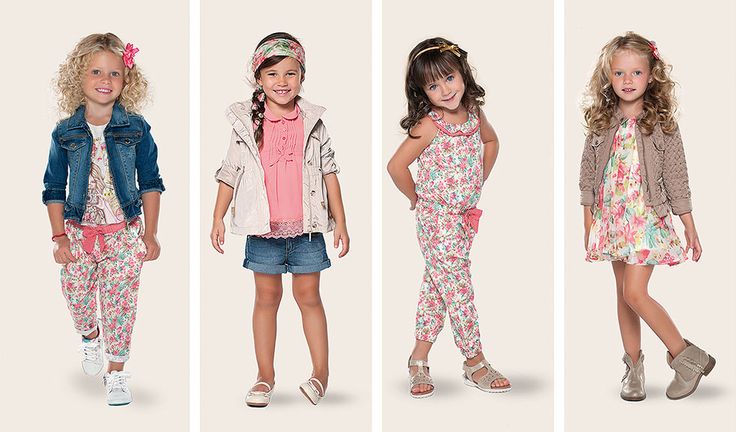Teaching kids how to dress themselves is an important skill. It builds their confidence and independence.
Parents often wonder how to start this process. In this ultimate guide, you will find helpful tips and strategies to teach your children to dress independently. Learning to dress is a big step in a child’s development. It helps them feel capable and boosts their self-esteem.
This guide will cover various age-appropriate methods and fun activities. You will discover how to make dressing a fun and engaging experience. With patience and practice, kids can master this skill. Preparing them for school and daily life is easier than you think. Let’s dive into effective ways to teach your little ones how to dress themselves!
Table of Contents
Introduction To Self-dressing Skills
Teaching kids to dress themselves is very important. It helps them learn independence. This skill boosts their confidence and self-esteem.
By dressing alone, children feel proud. They start to understand how to make choices. This leads to better decision-making skills in the future.
Self-dressing encourages fine motor skills. Kids practice buttoning, zipping, and tying shoes. These tasks improve hand-eye coordination.
Independence in dressing also promotes responsibility. Children learn to take care of their clothes. They begin to understand the importance of being neat.
Identifying The Right Age To Start
Every child develops at their own pace. Most kids start dressing themselves around age 3 to 4. At this age, they can pull off simple clothes. They may need help with buttons or zippers.
Signs of readiness include:
- Interest in choosing their clothes.
- Ability to follow simple instructions.
- Can put on and take off loose clothing.
- Shows frustration when they need help.
Look for these signs. They help you know when to start teaching.
Choosing Appropriate Clothing
Choose clothes that feel good. Soft fabrics are best. Avoid itchy materials. Simple styles are easier for kids. Look for elastic waistbands and loose fits. These allow for easy movement.
Fastening types matter. Buttons can be tricky. Instead, try zippers or velcro. They are easier for small hands. Teach kids to practice fastening and unfastening at home.
Remember to make it fun. Let kids pick their own outfits. This helps them feel confident. Give them choices that match the weather. Encourage them to dress themselves every day.
Breaking Down The Process
Teaching kids to dress themselves is fun and important. Start with the underwear first. Explain that underwear goes on first. Next, move to pants. Show them how to put on pants, one leg at a time.
After pants, add a shirt. Let them pull it over their head. Then, teach them to button or zip up. Next, focus on socks. Socks can be tricky, so practice is key.
Finally, show them how to put on shoes. Teach which shoe goes on which foot. Celebrate each small success. It builds their confidence!
Demonstration Techniques
Using visual aids helps children learn better. Pictures of clothes can show how to wear them. Flashcards can show different clothing items. Kids can point to the right clothing. This makes learning fun and easy.
Parental modeling is also important. Children learn by watching their parents. Show them how to dress in a fun way. Talk about what you are doing. This helps kids remember. Encourage them to try it themselves.
Ask questions while dressing. “Which shoe goes on which foot?” This engages them. It makes them think. Practice often. The more they practice, the better they get.

Credit: www.facebook.com
Hands-on Practice
Guided dressing sessions help kids learn fast. Start by showing them how to put on clothes. Use simple instructions for each step. For example, say, “Put your arms in the sleeves.” Repeat this often. Kids feel proud when they dress themselves.
Encourage solo attempts after practice. Let them try on their own. Be patient and give help when needed. Praise their efforts, even small wins. This builds their confidence. Kids learn better when they feel good about trying.
Troubleshooting Common Challenges
Frustration can happen during dressing. Kids may feel upset. Stay calm and encourage them. Offer help but let them try first. Praise their efforts, even small ones. This boosts their confidence.
Adjusting techniques is important for different clothing. Some clothes are tricky. Use these tips:
- Choose simple clothes like t-shirts and pants.
- Practice with easy fasteners like elastic waistbands.
- Use bright colors to make it fun.
- Show them how to put on each piece.
Be patient and give them time. Everyone learns at their own pace.

Incorporating Learning Into Daily Routine
Creating a dressing schedule helps kids learn. It sets a time to dress every day. This makes dressing a regular task. Kids like knowing what to do next.
Make dressing fun by using games. Turn choosing clothes into a game. Use a timer to see how fast they can dress. Reward them with stickers for success.
Colorful charts can help. Draw a picture of each outfit. Kids can check off what they wear. This makes dressing exciting and encourages independence.
Adapting For Children With Special Needs
Choosing the right clothes is important for kids with special needs. Sensory-friendly clothing can help. Look for soft fabrics. Avoid tags and rough seams. These features can make dressing easier and more comfortable.
Consider using stretchy waistbands. They are easier to pull on and off. Also, choose clothing with simple fasteners. Velcro and large buttons work well.
Personalized teaching strategies are key. Use visual aids to show how to dress. Step-by-step charts can guide them through the process. Celebrate small successes. This builds confidence and encourages independence.
Reinforcing Positive Behavior
Praise is very important for kids. They need to feel good about their efforts. Use simple words like “Great job!” or “You did it!” This helps them feel proud. Encourage them often. It builds their confidence.
Reward systems can also help. Set small goals for dressing. When they reach a goal, give a small reward. This can be a sticker or extra playtime. Make it fun! Kids love to see their progress. Rewards keep them motivated.
Remember, positive feedback works wonders. Kids learn better when they feel supported. This helps them want to dress by themselves.
Enhancing Fine Motor Skills
Helping kids with their clothes can be fun. Use tools and toys to improve their skills. Simple tasks like buttoning shirts or zipping jackets are great.
Try these exercises:
- Use large buttons and holes for practice.
- Let them use velcro shoes. It is easy to learn.
- Use toys like lacing cards. This helps with finger strength.
- Practice using zippers on bags or jackets.
These activities build dexterity and confidence. Kids enjoy learning this way. It makes dressing up less hard and more fun.
Teaching Shoe Tying
Start with the basics. Show kids how to hold the laces. Use two different colors for easy learning. Next, make a simple knot. Cross one lace over the other. Pull the ends tight.
Now, it’s time for the loops. Make a loop with one lace. Wrap the other lace around the loop. Pull it through the hole. This creates a bow.
Practice makes perfect. Encourage daily practice. Make it fun and not stressful. Celebrate small wins. Praise their efforts and progress.
Visual aids help a lot. Use diagrams or videos. This can make learning easier.
Lastly, be patient. Each child learns at their own pace. Stay positive and supportive.
Seasonal Dressing Skills
Teaching kids to dress themselves can be fun. Start with layering techniques. Layers help kids stay warm and cool. Choose a base layer like a t-shirt. Add a middle layer like a sweater. Finish with an outer layer like a jacket. Let kids pick their clothes. This gives them choices.
Managing accessories is also important. Accessories can be hats, scarves, or gloves. Teach kids how to put on a hat. Show them how to wrap a scarf. Help them find matching gloves. Encourage them to wear what they like. This makes dressing enjoyable.
Involving Kids In Laundry And Organization
Kids can learn sorting and caring for their clothes. Start by having them sort clothes into groups. For example, they can separate colors, whites, and darks. This helps them understand how to wash different types of clothes. Explain why care for clothes is important. Teach them to read labels for washing instructions.
Closet organization makes getting dressed easier. Use bins or baskets for different items. For example, one bin can hold socks, another for shirts. Hang clothes by type. Place outfits together to save time. Labels can help kids find their clothes quickly. With a neat closet, kids feel more confident choosing their clothes.
Using Technology And Apps
Many kids enjoy using interactive dressing games. These games are fun and helpful. Kids can learn how to dress themselves. They see how to choose clothes. They practice putting on shirts, pants, and shoes.
Educational apps make learning to dress exciting. Many apps show colorful characters. Kids follow these characters to dress up. They learn about colors, sizes, and styles. This makes dressing easier and more enjoyable.
Games and apps also build confidence. Children feel proud when they dress themselves. They can show off their outfits to family and friends. This helps them become more independent.
Cultural Considerations In Dressing
Teaching kids about different clothes is fun. Children learn about cultural attire. This includes traditional clothes from various countries. For example, kimono in Japan or sari in India. These clothes tell stories about family values and traditions.
Discussing why people wear certain outfits is important. Explain how clothes connect to culture. Ask kids questions about what they see. Encourage them to share their thoughts. This helps them understand respect for different cultures.
It’s also key to teach kids about appropriate dressing. Explain when to wear formal or casual clothes. Use examples from different events, like weddings or festivals. This builds their sense of style and self-expression.
Transitioning To School Dressing Routines
Getting kids ready for school can be tricky. Start by creating a routine. Set a specific time for getting dressed. This helps kids know what to expect.
Make it fun. Let kids choose their clothes. This gives them a sense of control. Use bright colors and fun patterns to keep them excited.
Organize uniforms clearly. Use labeled bins or drawers for easy access. Teach kids to pick their own uniform each day. This builds independence.
Practice dressing skills. Spend time each week practicing buttons and zippers. Fun games can make learning enjoyable. Celebrate their small wins to boost confidence.

Safety Aspects Of Dressing
Choosing safe clothing is very important for kids. Look for clothes without sharp edges. Avoid items with small parts that can choke. Soft fabrics are better to prevent skin irritation. Make sure the clothes fit well. Too loose or tight clothes can be a problem.
Teach kids about strangers. They should know not to talk to them. Explain that some strangers may not have good intentions. Always encourage kids to ask for help from trusted adults. Privacy is also important. Explain why it’s not safe to share personal information.
Supporting Independence In Older Children
Encouraging kids to express their personal style is important. Let them choose clothes they like. This makes dressing fun and exciting. Offer a few options to avoid too many choices. Talk about colors and patterns together. Ask them what they feel good in.
Responsibility for clothing care starts early. Teach kids how to wash and fold their clothes. Show them how to put away their items. This builds a sense of pride. Kids learn to take care of their belongings. Make it a fun activity to do together.
Celebrate their choices. Compliment their outfits often. This boosts their confidence. Encourage them to mix and match. Allowing freedom helps kids feel independent. Dressing themselves becomes a fun part of their day.
Conclusion And Final Tips
Celebrate each small victory. Praise your child for dressing themselves. This boosts their confidence. Celebrate milestones like wearing a shirt correctly.
Encourage independence. Let them pick their clothes. This helps them feel proud. Support your child when they need help. Offer guidance, but don’t do it for them.
Growth takes time. Be patient and understanding. Celebrate progress, no matter how small. Each step counts in their journey to self-dressing.
Frequently Asked Questions
How Can I Encourage My Child To Dress Themselves?
Start by giving your child simple clothes. Let them choose outfits they like. Make it fun and easy.
What Age Should Kids Start Dressing Themselves?
Most kids can start dressing themselves around age 3. They may need help with tricky parts, like buttons.
What Are Some Tips For Teaching Kids To Dress?
Use colorful, easy-to-wear clothes. Show them how to put on shirts and pants step by step. Practice often.
How Can I Make Dressing Fun For My Child?
Turn dressing into a game. Use songs or stories about getting dressed. Celebrate their efforts with praise.
What Should I Do If My Child Resists Dressing?
Stay calm and patient. Offer choices to make them feel in control. Avoid rushing them; let them take their time.
Are There Benefits To Kids Dressing Themselves?
Yes! It builds independence and boosts confidence. Kids learn skills that help them feel proud and self-sufficient.
Conclusion
Teaching kids to dress themselves builds confidence and independence. Start with simple clothes. Encourage them to choose their favorites. Celebrate their efforts, no matter how small. Patience is key. Mistakes will happen, but that’s okay. Gradually, they will improve their skills.
Dressing alone becomes fun and rewarding. With your support, they will gain pride in their ability. Soon, they will dress themselves with ease. This is a valuable life skill. Enjoy this journey together as they grow and learn.







